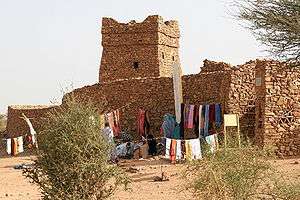Saharan Mauritania
Understand
This region makes up the northern two-thirds of the country. Picture-perfect Saharan dunes are the main attraction.
Climate
Rain usually falls during the hivernage, which lasts from July to September. Often, isolated storms drop large amounts of water in short periods of time. A year, or even several years, may pass without any rain in some locations. Diurnal variations in temperature may be extreme, although annual variations are minimal. During December and January, temperatures range from an early morning low of 0°C to a mid-afternoon high of 38°C. During May, June, and July, temperatures range from 16°C in the morning to more than 49°C by afternoon. Throughout the year, the harmattan often causes blinding sandstorms.
Get in
Get around
See
- The ruins of the ancient ksour of Oudane is a UNESCO World Heritage Site. A ksour is a medieval Saharan trading post.
- The Richat Structure (possibly the remnants of the lost city of Atlantis)
Do
Eat
Drink
Stay safe
Go next
gollark: String / Number -> split into chunks of length N?
gollark: Maybe, but you want as much stuff conveniently available as possible, yes?
gollark: <@341618941317349376> No, make `String / Number` do something even MORE ridiculous.
gollark: Do they?
gollark: Parse string into a base [Number] number.
This article is issued from Wikivoyage. The text is licensed under Creative Commons - Attribution - Sharealike. Additional terms may apply for the media files.
